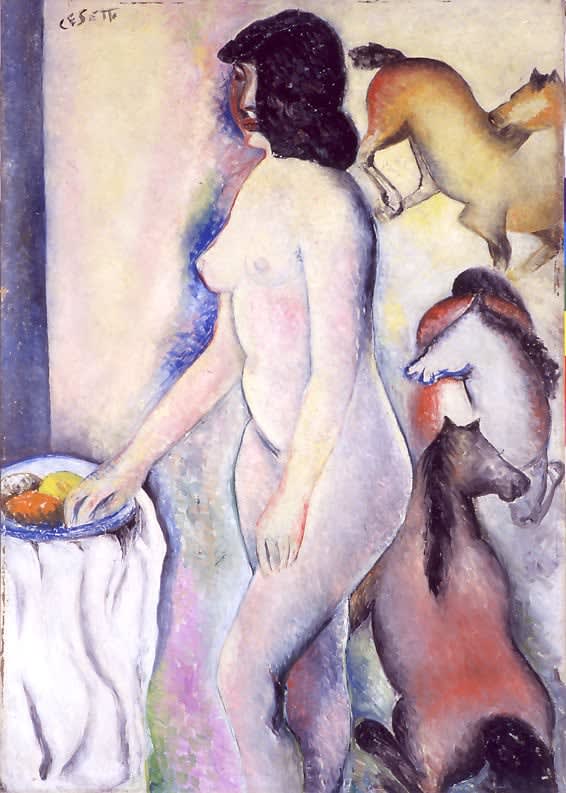Cesetti: Omaggio a cent'anni dalla nascita, Venice
One hundred years since his birth. Giuseppe Cesetti dedicated an important part of his life to Venice, dividing his time as a teacher and cultural promoter between the lagoon city, Florence and Paris. To this artist hastily judged a "primitive," the important exhibition will restore a new critical reading of his work.
Giuseppe Cesetti dedicated an important part of his life to Venice, dividing his time as a teacher and cultural promoter between the lagoon city, Florence and Paris. To this artist hastily judged a "primitive," the Venice Academy of Fine Arts, the Contini Gallery and the Bevilacqua La Masa Foundation are dedicating an important exhibition that will restore , in the setting of the Gallery in St. Mark's Square, a new critical reading of his work. Radically attached to his homeland, the Etruscan Tuscania where he was born in 1902, Cesetti was more than ever also a cosmopolitan artist and included in the Italian artistic and literary debate from the 1930s onward.
Intense were his relationships with writers and poets of the exciting Solaria season, from Montale to Cecchi, from Contini to Solmi to Debenedetti, whom he frequented in Florence during his formative years. After his first Venetian teaching period, Cesetti left the city for Paris where he met De Chirico, Campigli, and De Pisis. By now established and accredited (his name is juxtaposed with Scipione, Rosai, Sassu) he returned to Italy, at the turn of the Second World War, and stayed in Milan, participating in the Pesce d'oro group with Giovanni Scheiwiller, Salvatore Quasimodo, Leonardo Sinisgalli.
From the postwar period onward it would be all a succession of prestigious awards and engagements that brought him to Florence as a lecturer at the Academy of Fine Arts. Dating back to the 1960s is his assignment as cultural attaché for the Figurative Arts at the Italian Embassy in Paris and his commitment to enhancing the work of Italian artists abroad. He returned for short stays in Paris, a city from which he drew continuous inspiration, without forgetting his Etruria of which he was an animator and cultural promoter. Meanwhile, his works are shown in numerous exhibitions both in Italy and abroad, and he is a regular guest at the Venice Biennale and the Quadriennale in Rome.
With this exhibition, Cesetti is "returned" to Venice, which remembers him one hundred years after his birth: thirty years of activity bind him to the lagoon city and a lasting relationship, which the artist will continue to cultivate, with brief visits, even during his engagements abroad. In fact, in Venice, as Luca Massimo Barbero writes in the exhibition catalog, Cesetti was: "an admired teacher of the new generations at the Accademia, a tireless orator and commentator on art, a diplomatic weaver of relations between intellectuals in transit through the city, a true promoter and catalyst of cultural life."




